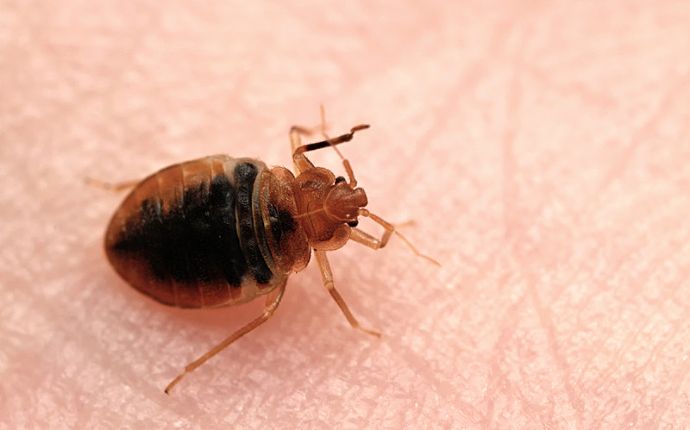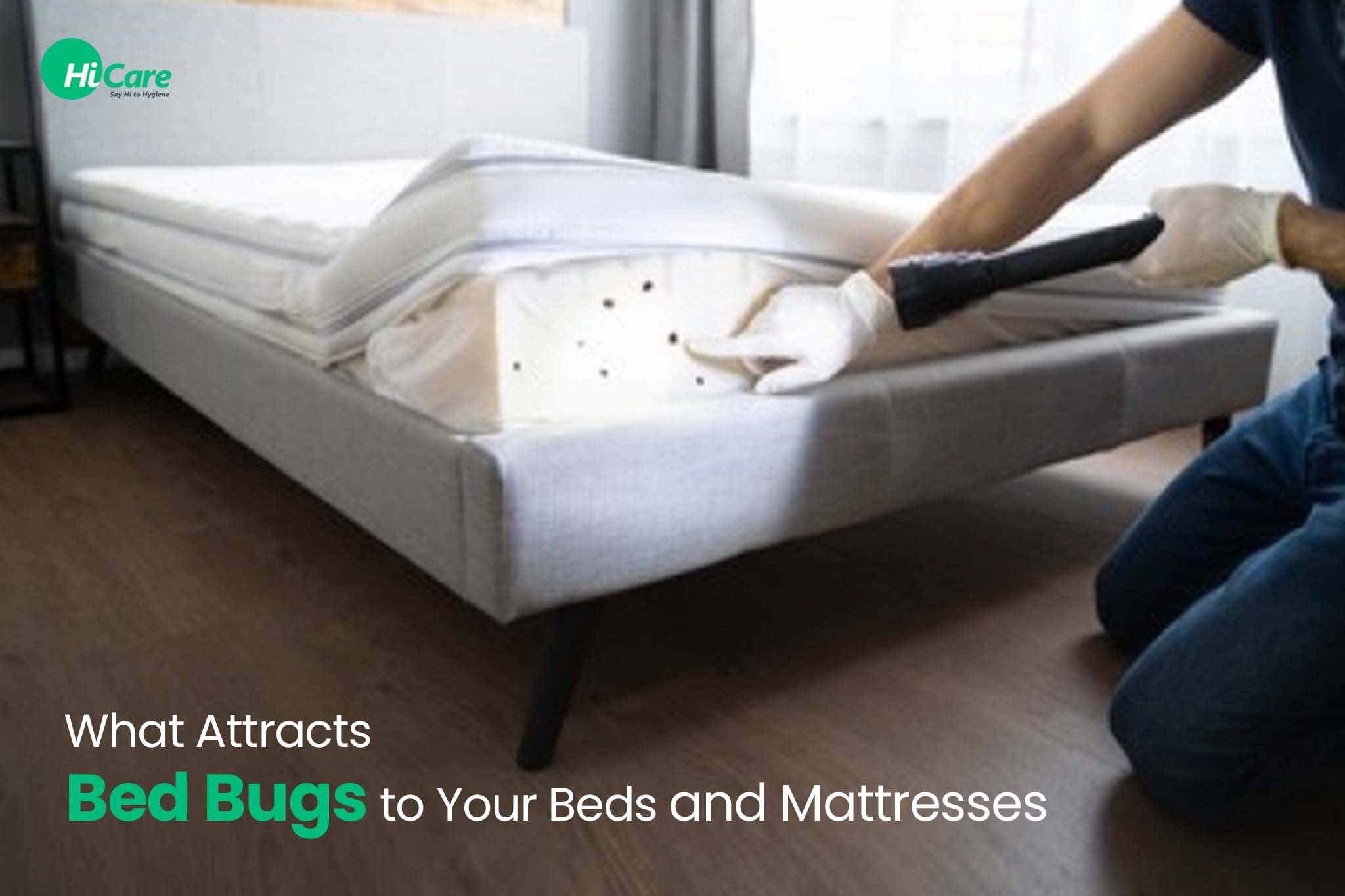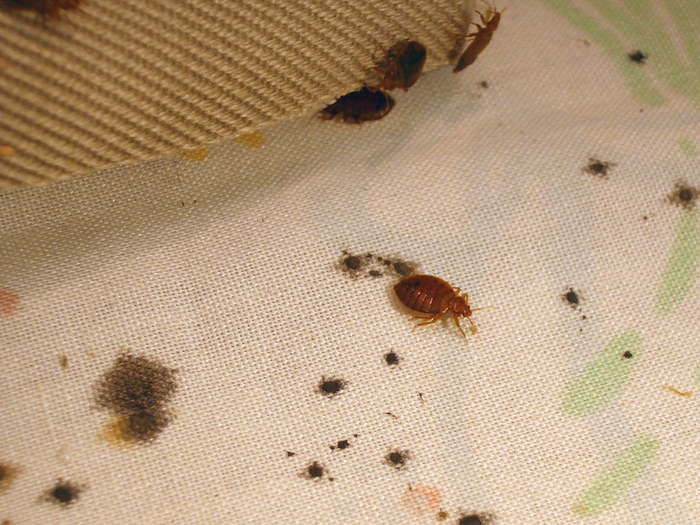To not attract bed bugs, regularly clean and vacuum your home and avoid clutter. Seal cracks and crevices and inspect second-hand furniture before bringing it into your home.
Additionally, use protective mattress covers and regularly launder bedding. Furthermore, be cautious when traveling and inspect hotel rooms for signs of bed bugs. By following these steps, you can minimize the risk of attracting bed bugs and keep your home bed bug-free.
Keeping your living space clean and tidy is essential in preventing a bed bug infestation. Furthermore, being cautious when acquiring second-hand furniture and utilizing protective mattress covers are effective ways to safeguard your home. Lastly, inspecting hotel rooms for signs of bed bugs while traveling can prevent them from hitching a ride back to your home. By taking these preventive measures, you can significantly reduce the likelihood of attracting bed bugs into your living space.
Identifying Bed Bugs
Identifying bed bugs is crucial in preventing an infestation. Their physical characteristics and common hiding spots play a significant role in early detection and effective management. Through a keen eye for detail, you can safeguard your home and personal space from these pesky parasites.
Physical Characteristics
- Color: Reddish-brown, with a flat oval body and no wings.
- Size: Approximately the size of an apple seed, but can be smaller in nymph stages.
- Features: Six legs, with antennas and a segmented abdomen.
Common Hiding Spots
- Mattresses and Bedding: Look for blood spots, exoskeletons, or live bugs.
- Furniture and Upholstery: Seams, crevices, and cushions are prime hiding spots.
- Cracks and Wall Gaps: They can also hide in wall cracks and electrical outlets.
- Luggage and Clothing: Check these items after a trip or exposure to potentially infested areas.

Credit: romneypestcontrol.com
Preventive Measures
When it comes to preventing bed bugs, taking proactive steps is crucial. By practicing preventive measures, you can significantly reduce the likelihood of a bed bug infestation in your home. Here are some key preventive measures to help you avoid attracting bed bugs.
Regular Cleaning Habits
One of the most effective ways to prevent bed bug infestations is to maintain regular cleaning habits. This includes frequent vacuuming, dusting, and washing bedding in hot water to eliminate any potential bed bugs and their eggs. Keeping a clutter-free environment also reduces potential hiding spots for bed bugs. By maintaining a clean and tidy living space, you can reduce the risk of bed bugs taking up residence in your home.
Sealing Entry Points
Another crucial preventive measure is to seal off entry points where bed bugs could potentially enter your home. This includes repairing any cracks in walls, baseboards, or sealings where bed bugs could hide and enter your living space. Using caulk to seal these cracks and crevices can help prevent bed bugs from gaining access to your home. Additionally, ensuring that screens on doors and windows are in good condition can act as a barrier to prevent bed bugs from entering your home.
Travel Tips
Prevent bed bugs during travels by thoroughly inspecting hotels. Keep luggage elevated and away from beds. Wash clothes in hot water post-trip to eliminate any lingering pests.
Inspecting Hotel Rooms
When arriving at a hotel, inspect the mattress, box spring, and headboard for signs of bed bugs.
Use a flashlight to check for tiny, reddish-brown bugs or dark spots – indications of their presence.
Keep luggage off the floor and consider using a luggage rack or sealing bags in plastic as an added precaution.
Notify the hotel staff immediately if you suspect bed bugs in your room to address the issue promptly.
Precautions While Traveling
- Always keep your luggage elevated and away from potential bed bug hiding spots.
- Wash and dry all travel clothes on the highest heat setting before returning home.
- Avoid placing bags on upholstered furniture or beds in public places.
- Seal used clothing in a plastic bag before packing it with clean clothes.

Credit: malumltd.co.uk
Laundry And Bedding Practices
Proper laundry and bedding practices play a crucial role in preventing bed bug infestations in your home. By following simple washing and drying procedures and utilizing mattress encasements, you can significantly reduce the risk of attracting these pesky creatures.
Washing And Drying Procedures
Regularly washing and drying your bedding and other fabric items is an essential step in keeping bed bugs at bay. Follow these simple procedures to maintain a clean and bug-free sleeping environment:
- Strip and sort: Start by removing all bedding, including sheets, pillowcases, blankets, and duvet covers. Sort them according to their color and fabric type.
- Wash with hot water: Bed bugs cannot withstand high temperatures, so washing your bedding in hot water is crucial. Set your washing machine to the highest temperature suitable for the fabrics, preferably above 120°F (49°C).
- Dry with high heat: After washing, transfer your bedding to the dryer. Use the highest heat setting available for the specific fabric. Bed bugs and their eggs are killed at temperatures above 122°F (50°C).
- Inspect and store: Once dried, carefully inspect your bedding for any signs of bed bugs. Fold or store them in sealed plastic bags or clean containers to prevent potential reinfestation.
Use Of Mattress Encasements
To provide an additional layer of protection against bed bugs, consider investing in mattress encasements. These specialized covers are designed to enclose your mattress completely, preventing bed bugs from infesting it. Here’s why mattress encasements are an effective deterrent:
- Eliminate hiding spots: Mattress encasements enclose the entire mattress, cutting off bed bugs’ access to hidden cracks and crevices.
- Prevent infestation: With their zippered closure, encasements create a barrier that bed bugs cannot penetrate, preventing them from entering or escaping the mattress.
- Easier detection: If you already have bed bugs, it becomes easier to spot them on the smooth surface of the encasement, which is easier to clean and inspect for any signs of infestation.
When purchasing a mattress encasement, make sure it is specifically designed for bed bugs and certified as such. Look for encasements that are labeled as “bug-proof” or “bed bug certified” to ensure maximum effectiveness.
By implementing proper laundry and bedding practices, including thorough washing and drying procedures and the use of mattress encasements, you can significantly reduce the risk of attracting bed bugs to your home and enjoy a bug-free, peaceful sleep.
Furniture And Second-hand Items
Finding the perfect furniture or unique decor piece can be exciting, especially if you’re on a budget. However, it’s important to be cautious when bringing second-hand items into your home. Bed bugs are nocturnal pests that can hitch a ride on used furniture, infesting your living space and causing a major headache. To avoid attracting these unwanted guests, here are some essential tips to keep in mind.
Inspection Before Purchase
Before purchasing any second-hand furniture, it’s crucial to inspect it thoroughly. Take your time to carefully examine all parts of the item, paying close attention to any cracks, crevices, or seams where bed bugs may hide. Look for small brown or black specks, eggs, or shedded skins, which are indicative of an infestation. Remember to check both the visible and invisible areas, such as underneath cushions, within upholstery, or inside drawers.
If you spot any signs of bed bugs during your inspection, it’s best to politely decline the purchase. It may be disappointing, but it’s better to be safe than sorry. Walking away from a potentially infested item will save you from the hassle, expenses, and sleepless nights that come with a bed bug infestation.
Quarantine Procedures
Even if the furniture appears to be bug-free, it’s essential to implement proper quarantine procedures before bringing it into your home. This step acts as an extra precautionary measure to ensure that any hidden bed bugs are not released into your living space.
Set up a designated quarantine area, such as a garage, shed, or isolated room that is far away from your sleeping quarters. Place the furniture in this area for at least a few weeks to monitor for signs of bed bug activity. During this time, cover the furniture with a plastic sheet or mattress cover, sealing it tightly to prevent any potential escape or entry. The goal is to keep the furniture isolated until you can be certain that it is not harboring any bed bugs.
While the furniture is in quarantine, regularly inspect it for any signs of infestation. Continue to check for indicators such as shedded skins, eggs, or excrement. If you notice any signs during this period, it is recommended to contact a professional pest control service for further assistance.
By following these thorough inspection and quarantine procedures, you can minimize the risk of attracting bed bugs when bringing second-hand furniture into your home. Remember, it’s always better to take precautions beforehand than deal with the stress and inconvenience of a bed bug infestation later on.
Professional Extermination
Professional Extermination: When facing a bed bug infestation, seeking professional extermination services is crucial.
When To Seek Help
Early signs of bed bugs include bites, bloodstains on sheets, and musty odors. Act promptly!
Choosing A Pest Control Service
- Research potential services online and check reviews from previous customers.
- Ensure the company is licensed, insured, and uses safe, eco-friendly extermination methods.
- Request quotes from multiple providers and compare their services and prices.
- Ask about their treatment plan, follow-up visits, and guarantees against reinfestation.
- Select a reputable company with thorough knowledge and experience in dealing with bed bugs.
Dealing With Infestations
Dealing with infestations can be stressful, but identifying the signs of infestation and taking the right steps to eradicate bed bugs are crucial for reclaiming your peace of mind and maintaining a pest-free living space.
Signs Of Infestation
Recognizing the signs of a bed bug infestation is the first step in addressing the issue. Look out for:
- Small reddish-brown bugs on your bedding or furniture
- Dark spots or stains on sheets and mattresses
- Sweet, musty odor in the room
Steps To Eradicate Bed Bugs
If you suspect a bed bug infestation, it’s important to act swiftly. Follow these steps to eradicate them:
- Thoroughly clean and declutter the affected area.
- Wash and dry all bedding and clothing on high heat.
- Vacuum the entire room, paying special attention to seams, crevices, and furniture.
- Seal and dispose of infested items responsibly.
- Consider professional pest control treatment for severe infestations.
Educating Others
When it comes to preventing bed bugs, educating others is a crucial step in controlling their spread. By spreading awareness and sharing prevention tips, you can help your community stay informed and vigilant against these pesky pests.
Raising Awareness In Your Community
Use various platforms such as social media, community bulletin boards, and local events to inform people about the risks of bed bug infestations. Host workshops and seminars in community centers to educate residents about identifying signs of bed bugs and the importance of early detection.
Sharing Prevention Tips
Spread the word on effective prevention measures such as regularly inspecting used furniture, encasing mattresses with bed bug-proof covers, and being cautious when traveling to avoid bringing bed bugs home. Create and distribute flyers or brochures containing these tips to reach a wider audience.

Credit: hicare.in
Frequently Asked Questions Of How To Not Attract Bed Bugs?
How Can I Prevent Bed Bugs From Entering My Home?
To prevent bed bugs from entering your home, make sure to inspect second-hand furniture and clothing before bringing them inside. Keep your home clean and clutter-free, regularly vacuum carpets and upholstered furniture, and seal cracks and crevices where bed bugs could hide.
Use mattress and box spring encasements, and wash bedding regularly in hot water.
Can Bed Bugs Travel From One Room To Another?
Yes, bed bugs can travel from one room to another. They are excellent hitchhikers and can crawl onto clothing, luggage, or other belongings, allowing them to move between rooms. If you suspect bed bugs in one room, it’s important to take precautions in other areas of your home as well to prevent their spread.
How Do I Identify Signs Of A Bed Bug Infestation?
Signs of a bed bug infestation include red, itchy bite marks on your body, small blood stains on your sheets or pillowcases, dark spots of bed bug excrement on your mattress or furniture, and the presence of tiny, translucent bed bug eggs or shed skins.
If you notice these signs, consider contacting a professional exterminator.
Are There Any Natural Remedies To Repel Bed Bugs?
While natural remedies may be used as a complement to professional treatment, they are not usually effective at eliminating a bed bug infestation on their own. However, some popular natural remedies to repel bed bugs include essential oils like lavender or tea tree oil, as well as the use of diatomaceous earth or steam cleaning.
Conclusion
To keep bed bugs at bay, practice good hygiene, inspect spaces regularly, and declutter. Seal cracks, wash bedding frequently, and vacuum regularly. Remember, prevention is key in avoiding these pesky pests. By following these simple steps, you can ensure a bed bug-free environment in your home.
Stay vigilant!
Related posts:

I’m MD Tanvir, and I bring years of expertise gained from working closely with pest control companies to the forefront. My journey in the industry has inspired me to launch Bug Battler, a platform aimed at equipping people with the know-how to combat pests autonomously. Through Bug Battler, I aim to empower individuals with practical insights to tackle pest infestations effectively.

